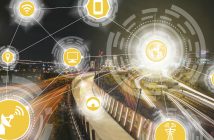Pioneering research from the University of South Australia has shown for the first time that drones can be used to detect human vital signs in war zones and natural disasters.

Under a collaborative agreement with the Defence Science and Technology (DST) Group, UniSA researchers have successfully trialled unmanned aerial vehicles to measure heart and respiratory rates using remote-sensing imaging systems, while hovering three metres from humans.
Video footage from the drones can detect changes in human skin tone and minute head movements to read vital signs, providing a low cost, accurate and convenient way to monitor heart rates without physical restrictions, researchers say.
The breakthrough could have many applications, including triaging disaster victims in earthquakes, detecting security and terrorism threats at airports, and remotely monitoring heart rates of premature babies in incubators.
Under the supervision of Professor Javaan Chahl, UniSA PhD students Ali Al-Naji and Asanka Perera carried out a number of experiments with 15 healthy individuals, ranging in age from 2-40 years, in both indoor and outdoor settings, and within close range of the drones.
The results were as accurate as traditional contact methods – ECGs, pulse oximeters and respiratory belts – that are currently used to monitor vital signs.
“This is the first time that video from a hovering UAV has been used to measure cardiorespiratory signals,” Chahl says.
The experiments were performed within three metres of humans but researchers expect the drones to capture information at much greater distances once the technology is further developed.
Heart monitors
The drones could help detect potential terrorists in public spaces, merely by measuring anomalies in their heart rates, according to Chahl, a Professor of Sensor Systems in UniSA’s School of Engineering.
“A person who is about to engage in violence will probably have anomalous behaviour and physiological signs.
“They might be highly agitated or unnaturally calm and in many cases they might be under the influence of drugs.
“There is a good chance that our system can detect these anomalies.”
In the developing world, expensive disposable electrodes could also be replaced with this technology to monitor vital signs remotely and eliminate the temptation to reuse the electrodes which can spread horrific skin infections between neonatal infants.
Aged care facilities may also benefit from the imaging systems which could be placed in strategic locations to monitor older people’s heart and breathing rates, Chahl adds.
“Obviously there are privacy and ethical issues around this technology that need to be resolved before it becomes common practice, but there is enormous potential to use machine vision systems to benefit society, particularly in the biomedical sphere.
“I expect we will be using this software in everyday life in the next decade.”




